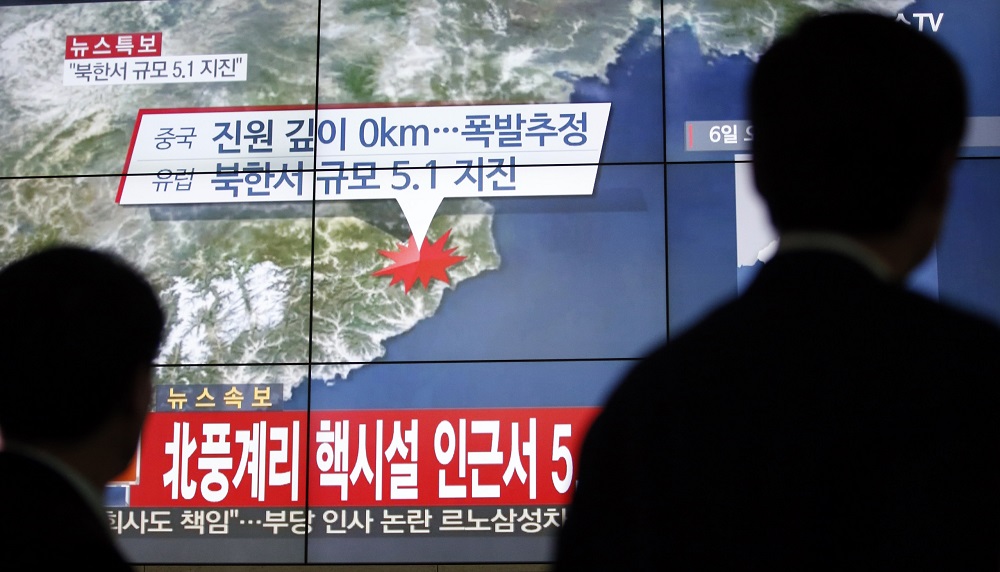South Korea announced on Saturday that an earthquake in North Korea earlier in the day was natural.
The 3.0 quake was detected around where the isolated country recently conducted a nuclear test, said South Korea’s weather agency.
The quake was detected in an area around Kilju, in northeastern North Korea, and about 20 kilometers (12 miles) southeast of where the North conducted its sixth and most powerful nuclear test on September 3, according to an official from Seoul’s Korea Meteorological Administration.
China, on the other hand, estimated that the tremor was triggered by a “suspected explosion.”
The official from the South Korean agency said the analysis of seismic waves and the lack of sound waves clearly showed that the quake was not caused by an artificial explosion.
“We use several methods to tell whether earthquakes are natural or man-made,” said the official, who asked for anonymity.
“A key method is to look at the seismic waves or seismic acoustic waves and the latter can be detected in the case of a man-made earthquake. In this case we saw none. So as of now we are categorizing this as a natural earthquake.”
Punggyeri nuclear site is located in Kilju where the quake was detected, the official added.
China’s official Xinhua News Agency reported earlier that the country’s seismic service detected a magnitude 3.4 quake in North Korea and saw the likely cause as an explosion.
North Korea has been maintaining a torrid pace in nuclear and weapons tests as it accelerates its pursuit of nuclear weapons that could viably target the United States and its allies in Asia.
North Korea said its recent nuclear test was a detonation of a thermonuclear weapon built for its developmental intercontinental ballistic missiles. In two July flight tests, those missiles showed potential capability to reach deep into the US mainland when perfected.
All of North Korea’s previous six nuclear tests registered as earthquakes of magnitude 4.3 or above. The September 3 test registered as a 6.3 magnitude quake.
A secondary tremor detected after that test could have been caused by the collapse of a tunnel at the mountainous site, experts said at the time. Satellite photos of the area after the September 3 quake showed numerous landslides apparently caused by the massive blast, which North Korea said was a hydrogen bomb.
The head of the nuclear test monitoring agency CTBTO said on Saturday that analysts were “looking at unusual seismic activity of a much smaller magnitude” in North Korea, and that it would have more details to come.
There was no immediate reaction from China’s Foreign Ministry, but the news was widely reported by Chinese state media outlets and on social media.
Tensions have continued to rise around the Korean peninsula since Pyongyang carried out its sixth nuclear test, prompting a new round of UN sanctions.
North Korea’s Foreign Minister Ri Yong Ho, currently in New York for a United Nations meeting, warned on Thursday that Kim could consider a hydrogen bomb test of an unprecedented scale over the Pacific.
US President Donald Trump called the North Korean leader a “madman” on Friday, a day after Kim dubbed him a “mentally deranged US dotard” who would face the “highest level of hard-line countermeasure in history”.
North Korea’s nuclear tests to date have all been underground, and experts say an atmospheric test, which would be the first since one by China in 1980, would be proof of the success of its weapons program.
